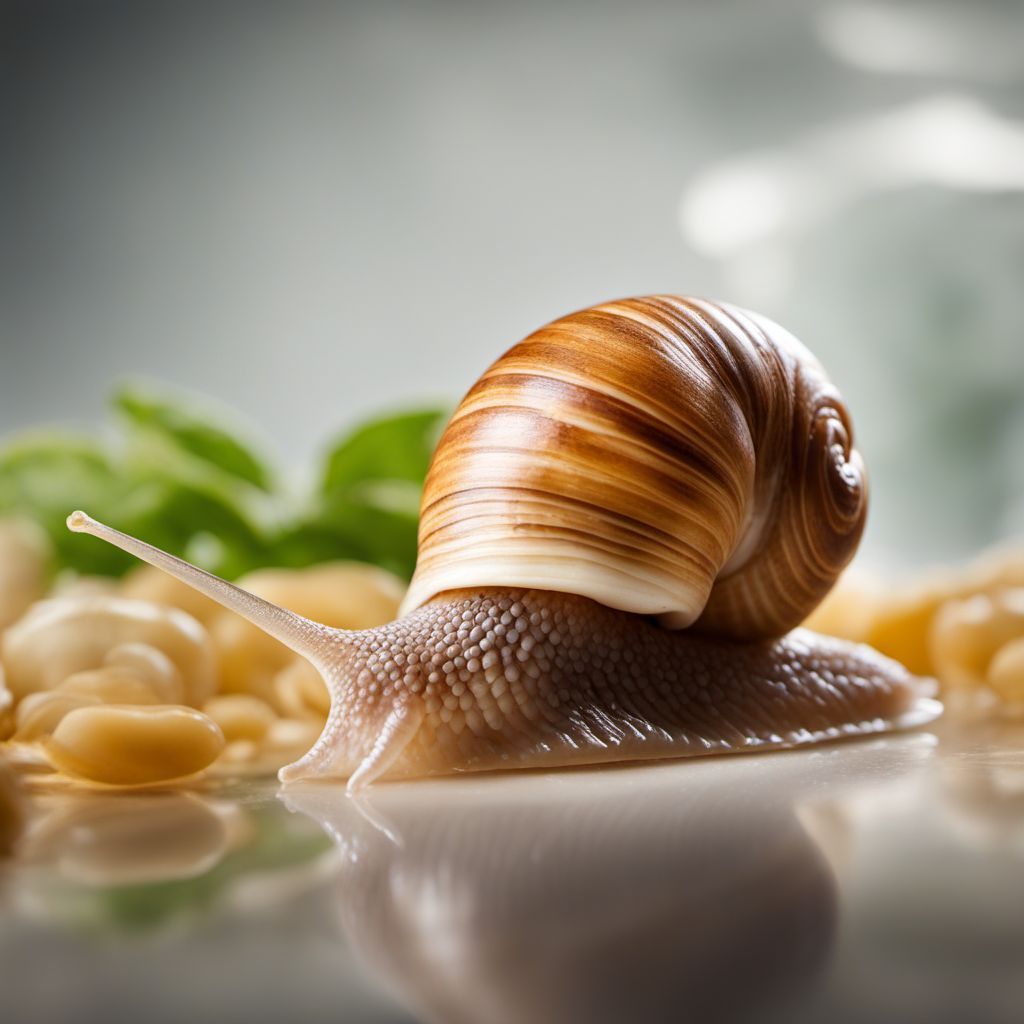
Ingredient
Snails
Gourmet Delicacy: Escargot
Snails are small, slimy creatures with a spiral-shaped shell. They have a mild, earthy flavor and a tender, slightly chewy texture. Their appearance varies depending on the species, but they are typically brown or gray in color. Snails are commonly used in French cuisine, particularly in the classic dish Escargot à la Bourguignonne.
Origins and history
Snails have been consumed by humans for thousands of years and have a rich culinary history. They were first enjoyed by the ancient Romans and Greeks, who considered them a delicacy. Snails are still highly regarded in French cuisine, where they are often served as an appetizer or main course. They are also popular in Mediterranean and Asian cuisines.
Nutritional information
Snails are low in calories and fat, making them a healthy choice. They are a good source of protein, iron, and vitamin B12. A 100-gram serving of cooked snails provides approximately 90 calories, 16 grams of protein, and 2 grams of fat.
Allergens
Some individuals may be allergic to snails, so it is important to exercise caution when consuming them for the first time. Allergic reactions to snails can range from mild to severe, so it is best to consult with a healthcare professional if you have any concerns.
How to select
When selecting snails, choose ones that are alive and active. The shells should be intact and free from cracks or damage. Avoid snails that have a strong odor, as this may indicate spoilage. If purchasing canned or frozen snails, check the expiration date and ensure they have been stored properly.
Storage recommendations
Fresh snails should be stored in a cool, dark place, such as the refrigerator. Keep them in a well-ventilated container and cover them with a damp cloth or paper towel to maintain moisture. Canned or frozen snails should be stored according to the manufacturer's instructions.
How to produce
Snails can be produced by creating a suitable habitat for them in your garden or backyard. Provide them with a moist environment, such as a shallow dish filled with water, and offer them a variety of vegetation to feed on. It is important to research the specific needs of the snail species you wish to raise.
Preparation tips
To prepare snails, they must first be purged to remove any impurities. This can be done by placing them in a container with a mixture of water, salt, and flour for a few days. After purging, the snails can be cooked in various ways, such as sautéing them in garlic butter or baking them with herbs and breadcrumbs. Serve them as an appetizer or incorporate them into pasta dishes or stews.
Culinary uses
Snails are commonly used in French cuisine, where they are often served as Escargot à la Bourguignonne, a dish that features snails cooked in garlic butter and parsley. They can also be added to pasta dishes, risottos, or stews to add a unique flavor and texture. Snails are a versatile ingredient that can elevate both simple and complex dishes.
Availability
France, Italy, Spain, Greece, Morocco
More ingredients from this category
Recipes using Snails » Browse all
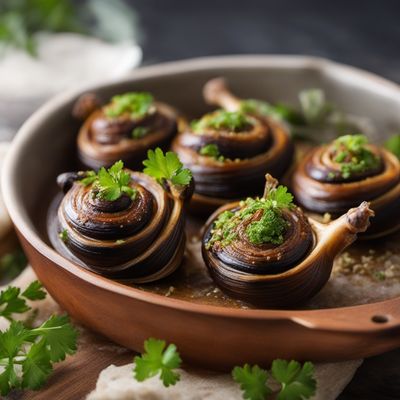
Croatian-style Stuffed Snails
Savor the Delights of Croatian Cuisine with Stuffed Snails

Turkish-style Cornmeal with Snails
Sultan's Delight: Turkish Cornmeal with a Twist of Snails

Grilled Snails with Monmouthshire Twist
Monmouthshire Delight: Grilled Snails with Local Flavors
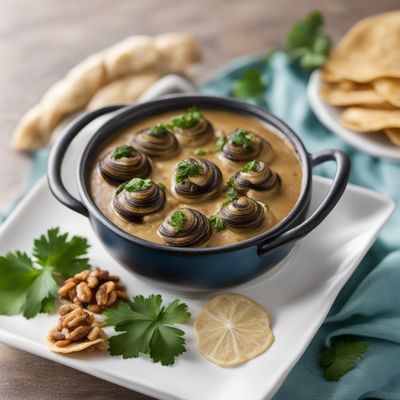
Mexican-style Escargots with Walnut Sauce
Sabores de México: Escargots en Salsa de Nuez
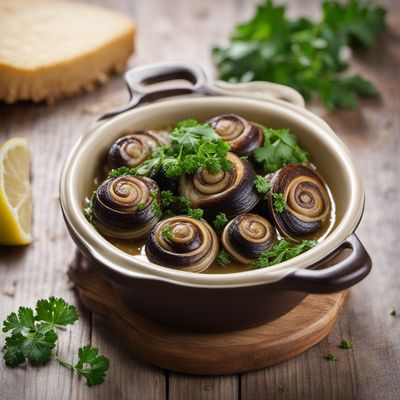
Escargots Bourguignonne
Garlic Butter Escargots: A French Delicacy
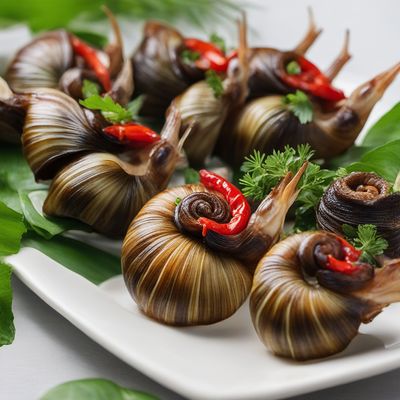
Grilled Lemongrass Snails
Tangy and Fragrant Grilled Lemongrass Snails

Sylheti-style Spiced Rice with Rabbit and Snails
Sylheti Delight: Fragrant Rice with Rabbit and Snails

Sarawakian-style Escargot
Borneo Delicacy: Sarawakian-style Escargot with Local Flavors
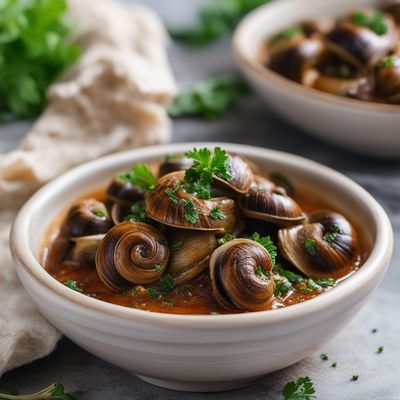
Bebbux bl-aljoli (Maltese Snails in Garlic Sauce)
Garlic Delight: Maltese Snails in a Flavorful Sauce

Tapa Caracoles with Garlic and Parsley Sauce
Savory Snails in Garlic and Parsley Sauce: A Spanish Delight

Creamy Polenta with Snails
Velvety Delight: Creamy Polenta with a Twist of Snails
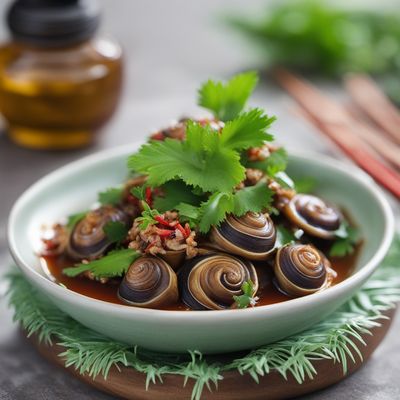
Coconut Stir-Fried Snails
Exotic Delight: Coconut Stir-Fried Snails
